|
CUSTIS-LEE MANSION The Robert E. Lee Memorial |
 |
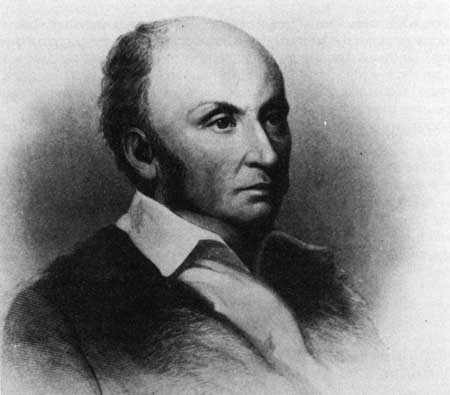
George Washington Parke Custis.
Engraved
from the portrait by Gilbert Stuart made about 1825.
History of Arlington to 1861 (continued)
THE LEES AT FORT MONROE, 1831 TO 1834. Wedding trips not being customary at that time, the young married couple stayed at Arlington until it was time for them to go to Fort Monroe where Lee was stationed. At Christmas they returned home, and, because of the bad weather, Mrs. Lee remained there till spring. Furniture and choice provisions from the Custis farms helped to make the Lee's quarters at the fort more home like, while Mrs. Custis' frequent letters lessened her daughter's home sickness, as did the whimsical, chatty ones her father wrote regularly to his "Dr Son & Daughter." In September of 1832, their first child was born there, a son named George Washington Custis Lee, after his grandfather. Christmas that year at Arlington was especially happy because of the new baby (known familiarly as "Custis" Lee), and because Lee was unexpectedly able to be there. The following year passed much the same way.
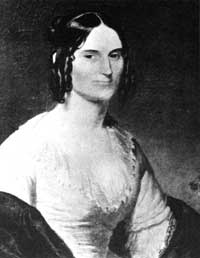
|
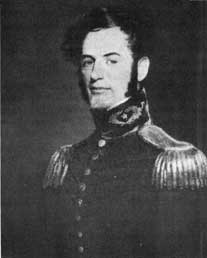
|
|
Lieutenant and Mrs. Robert E. Lee in
1838. From the portraits by William E. West. U. S. Army Signal Corps photographs. | |
LEE ON DUTY AT WASHINGTON, 1834 TO 1837. In the autumn of 1834, Lee was transferred to Washington and with his family made his home at Arlington. Sometimes his work kept him away overnight, but usually each morning and afternoon he was to be seen riding between his office and home. Lee disliked the office work which kept him in the city until the middle of 1837, but life at Arlington was most pleasant. Mrs. Lee's parents idolized their little grandson, and for them Lee felt a growing respect and affection. Custis was the nearest link to the first President, and associating with him and living in the presence of so many of the General's personal belongings made Washington very close and real to the young engineer, an example and influence that steadily entered his soul.
Lee fitted easily into the quiet way of life at Arlington. Mrs. Lee and her mother cared little for formal social affairs, preferring to be out of doors gardening or riding about the estate when not entertaining visitors. Mr. Custis was usually busy with his farm, and since he liked to hunt, he might often be seen walking or riding about the estate with his gun and dogs; evenings he spent with his family by the hearth, or retired to his study to work on his literary efforts. Each morning and evening the family and servants gathered for prayers, and grace was said before each meal. On Sundays the family usually drove into Alexandria to church, or held services at home if the roads were bad. Mrs. Lee, like her father, was an amateur artist, an interest shared by her husband who also occasionally assisted Mr. Custis in his business affairs or put his engineering experience to use in making improvements.
Troubles there were, of course. Lee was away on a mission to Ohio and Michigan when his second child, a daughter whom they named Mary, was born in the summer of 1835. When he returned, he found his wife so seriously ill that she was unable to walk for months. This was the first of a series of illnesses which were to make her an invalid much of her life.
Though this experience saddened Lee at the time, it made his home the more dear to him. It was about this time that he wrote to a friend: "The Country looks very sweet now, and the hill at Arlington covered with verdure, and perfumed by the blossoms of the trees, the flowers of the Garden. Honey-Suckles, yellow Jasmine, &c. is more to my taste than at any other season of the year. But the brightest flower there blooming is my daughter . . . [I] hurry home to her every day."
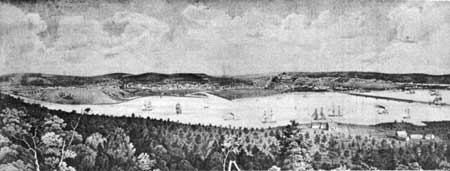
View from Arlington about 1837.
From the original lithograph in the New York Public Library.
THE LEES AT ST. LOUIS, 1838 TO 1839. In 1837 another son was born, and although Lee had received orders to report to St. Louis he was able to remain at Arlington until he was assured the mother and baby were doing well. Christmas he was home again, remaining there till spring so Mrs. Lee and the two boys could return with him to St. Louis. Little Mary stayed behind with her grandparents, which may have compensated them somewhat for the absence of her parents the following Christmas.
Now a captain, Lee brought his family home in the spring of 1839 for Mrs. Lee to await the arrival of their fourth child, though he could not remain for the event. Early in July, he heard a new daughter had joined the family circle, but not until Christmas did he get to see her.
An incident which probably occurred that winter illustrates the seriousness with which Lee viewed his family responsibilities. He and 8-year-old Custis had gone for a walk one snowy day, the boy following behind while his father broke the way. Preoccupied with ploughing through the deep snow, the father failed to look behind for some time, and when he did, saw that his little son was setting his feet carefully in the tracks his father had made, while imitating his every movement. "When I saw this," Lee related afterwards, "I said to myself, 'It behooves me to walk very straight, when the little fellow is already following in my tracks'."
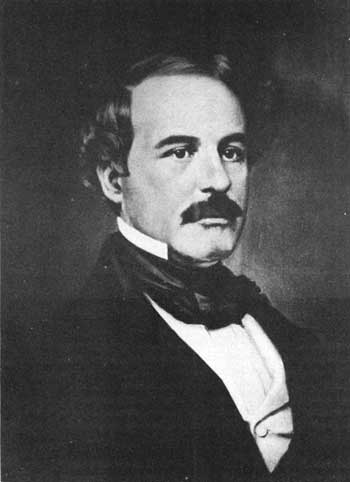
Robert E. Lee in civilian dress, about 1850.
LEE AT FORT HAMILTON, N . Y., 1841 TO 1846. Lee did not return to St. Louis until the summer of 1840, and then only to finish up his work and return home. There his fifth child, a girl, was born the following February. Soon after, Lee was sent to Fort Hamilton, N. Y., where he remained on duty until 1846. During these years it was customary for his family to be with him at New York during the summer and fall months and at Arlington the rest of the year, where Lee usually passed the winter. Two more children, a boy and a girl, were born in these years. Telling a friend about the arrival of the boy, Lee wrote: "About a month ago a young Robert E. Lee made his appearance at Arlington, much to the surprise and admiration of his brothers and sisters. He has a fine long nose like his father, but no whiskers."

|

| History | Links to the Past | National Park Service | Search | Contact |
|
Last Modified: Mon, Dec 2 2002 10:00:00 am PDT |

